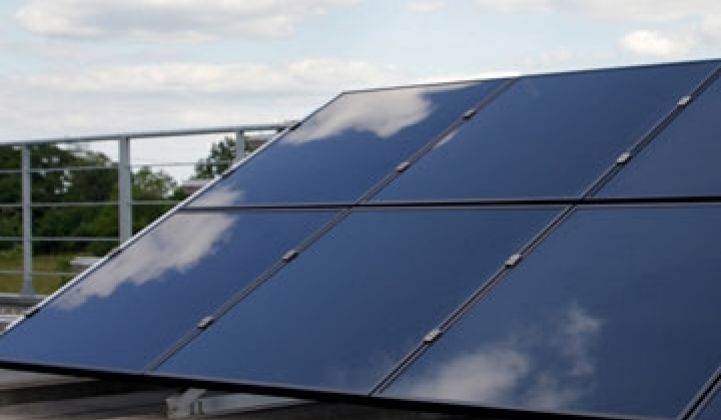CIS stands for copper indium disulphide solar cells. CIGS is copper indium gallium selenide.
So what's the difference?
CIS solar cells aren't as efficient and wallow around 7 percent efficiency, admits Anup Jacob at the Virgin Green Fund, which invested in CIS maker Odersun. But CIS cells are more transparent. Thus, they stand a better chance of succeeding in the building integrated photovoltaic market than CIGS cells. BIPV cells, after all, will likely have to cover windows to get any decent surface area.
Contrary to public perception, Virgin Green functions pretty much like any other mid-stage VC firm, said Jacob. It is not a showy philanthropic arm for Richard Branson. Sir Richard participates in the fund, but does not drop down in the middle of meetings in a hot-air balloon to meddle with investment decisions.
Second, the firm does not take science risks like the Quercus Trust or Khosla Ventures, the two other prominent "we emerged from the vision of a really rich guy" firms. Ideally, Virgin Green waits until the science is proven, but before the onerous capital requirements kick in. It looks at about 3,000 deals a year. About 1 percent get to term sheets and Virgin actually invests in about one-third of those. That makes it pretty much like most other Silicon Valley firms. "We like to take market and execution risks," he said.
So far, the firm has participated in two somewhat successful deals. It has a stake in Solyndra, the CIGS maker which has managed to begin production. Most other CIGS companies are a few steps behind. Solyndra has an unusual cylindrical-shaped solar cell. The company's advantage, though, comes in installation: the Solyndra cylinders are mounted in inexpensive wire racks that look like a closet system from Ikea. Jacob claims that the installation costs for a Solyndra system come to 50 cents a watt, far lower than the $2 to $4 per watt installation costs of other thin film companies.
"Everyone else has a natural boundary," he said. Rumors swirl that the installation costs are higher, but Jacob asserts he knows the math pretty well. He sits on Solyndra's board, he added.
Virgin Green also invested in Metrolight, which specializes in digital controls for high intensity discharge lights. All the streetlights in New York City have been retrofitted with Metrolight's components. The company raised $3 million more and appointed Zvi Segal as CEO in June.
What else has he got in the portfolio? Wildcat Discovery has coined a process for figuring out novel material combinations for solar panels, cathodes and other materials. The company essentially exploits some of the high-performance computing techniques in pharmaceutical research. A similar strategy is being pursued by Intermolecular.
Virgin also invested in Seven Seas Water, which has created a small-scale desalination plant for tropical nations. The company is staffed by execs who defected from GE's water division.
"Water is the most mispriced commodity on the planet," he said. "The highest cost in the production of electricity is water and the highest cost in the movement of water is electricity."
It also put money into Gevo, the biofuel maker. Gevo wants to buy and retrofit existing ethanol plants to expand. There is an estimated 8 billion gallon ethanol capacity in the U.S. that costs $12 billion to build. It now only has about a $4 billion market value, he claimed.
Image via Odersun.



